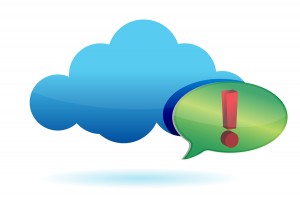Archive for the ‘tips and tricks’ tag
10 Essential WordPress Security Tips no comments
Failing to protect your WordPress site from potential hackers could leave years of work vulnerable to attack. Malicious users know how to exploit vulnerabilities in unprotected sites, hijack files and plugins for their own use and sabotage functionality.
If you’re not doing all you can secure your site against attacks, it’s time to take action. Use these ten WordPress security tips as a starting point to lock out hackers and protect your web presence.
1. Obscure the Login Page
By default, WordPress users access their login pages via domain names followed by wp-login or wp-admin. Hackers know this and will immediately navigate to these pages when attempting to enter your site. Using a security plugin, you can change the URLs of login and user registration portals. Although this doesn’t prevent hackers from eventually finding these pages, it slows them down and may be frustrating enough to make them give up trying to access your site.
2. Choose Unique User Identification
Using “admin” as your administrator login name is like an open door for hackers. Your login should be distinct to your website and difficult to figure out. One way to ensure your login remains unique is to use the email associated with your WordPress installation instead of a username. Email addresses are harder to guess and offer better authentication for administrator logins.
3. Be a Password Juggler
There was a time when you could stick a few numbers on the end of your dog’s name and call it a reliable password, but in today’s volatile Internet landscape, you need much more than that. Use a password generator to create strong WordPress passwords, and change them on a regular basis. Good passwords include uppercase and lowercase letters, numbers and symbols in various combinations. The more complex your passwords, the more secure your site will be.
4. Enable Two-Factor Authentication
Many sites employ a two-step process to verify the identity of each user attempting to log in. Using the same method on your site means it will take a little longer for you to get to the dashboard, but it may prevent hackers from gaining access to your site. Two-factor authentication lets you choose a secret question or a special code to be after the initial password screen. Some methods use a one-time authentication message sent via text to ensure only authorized users can log in.
5. Install a Security “Watchdog”
Hackers need multiple attempts to get into your WordPress site, and plugins like WordFence alert you to this activity while locking down the site to prevent unauthorized access. Such security plugins act like gatekeepers, watching who tries to log in, sending alerts, checking for file changes and banning offending IP addresses. Reports of activity arrive in your inbox immediately and again in weekly summaries so that you can keep on top of any potential problems.
6. Control Other Accounts
Collaborative or corporate blogs require several user accounts, and this can pose a problem for security unless all users understand how to keep the site protected. Be selective when adding accounts, since every new login creates another potential point of vulnerability. Establish rules about password strength and how frequently passwords should be changed, and make sure each user has a distinct login name. Set individual user permissions at the lowest levels possible so that it’s difficult for hackers to do damage should additional accounts ever be compromised.
7. Use .htaccess to Hide Important Files
Editing the .htaccess file can change certain WordPress functions, including the level of security. With the right code, you can:
- Disable directory listings to prevent unauthorized users from accessing file listings
- Hide your wp-config file from malicious users
- Set which IP addresses are granted administrative privleges
- Block access to the PHP files for themes and plugins
Remember to back up the existing .htaccess file before making any changes.
8. Stay on Top of Updates
Themes, plugins and the WordPress core are updated regularly to fix known problems, including security issues. Before installing any plugin or theme, check the last time it was updated. Ensure the developers offer continued updates after installation, and stay away from pirated “free” versions of premium plugins.
Run updates as soon as you can to eliminate vulnerabilities. If you have trouble remembering to update or have a tendency to miss notifications, consider setting automatic updates to run on a routine basis.
9. Don’t Neglect “Spring Cleaning”
Make a habit of going through the plugins and themes stored on your WordPress site whenever you run updates. Delete anything you haven’t used in a while or have replaced with something more functional. You may be surprised how many plugins you’ve accumulated while building your site, and getting rid of unused ones eliminates vulnerabilities.
It’s also a good idea to clean up your database from time to time. Find a reliable database cleaning plugin and run it to remove old file versions and other outdated information. As a bonus, your site should load faster and run more smoothly without the extra files weighing it down.
10. Backup as Often as Possible
No matter how careful you are, there’s always a chance an enterprising hacker could break through your site’s defenses. Creating site backups safeguards all the information on your site, giving you a way to restore everything should your security measures ever fail.
Some hosting companies provide scheduled backups as part of their services, but it’s a good idea to also have your own plan in place. Use a backup plugin or make manual backups on a regular basis, and store the files in a secure place so that you know they’ll always be there if you need them.
WordPress site security isn’t a “set it and forget it” measure. After putting initial protections in place, it’s essential to continue monitoring activity and running updates. Keep an eye out for new, stronger security tools, and implement the best combination of plugins and code changes to prevent the majority of attacks.
Follow Us :
Share :
3 Ways to Speed Up Your Website no comments
Many online business owners make the mistake of overlooking the importance of having a fast website. When you want to get the most from your online presence, the loading speed of your content is one of the most important factors to your success. Your prospects have a lot of distractions fighting for their attention, and you must compete with their friends, family and other advertisers if you want to make any progress.
Web users don’t have much tolerance for slow websites, and most will navigate away if your content takes longer than a few seconds to appear on the screen. So every step that you take to increase your website’s performance will help you attract and retain customers, and you are about to learn how to get moving down the right path.
1. Content Delivery Network (CDN)
One of the benefits of working online is that you can reach a worldwide audience, and doing so is one of the best ways to enhance your profitability. But when someone downloads your content or accesses your website, the speed at which the content loads will depend on that person’s location. For example, if your hosting server is located in New York, someone who lives in China will encounter delays when trying to access your website.
If your prospects are forced to wait too long, they will often opt to find a local business that can offer them efficient download speeds. You can overcome that problem by using a content delivery network, or CDN. When you have a CDN, your content is stored on several servers around the world. When someone accesses your website or tries to download a file, the CDN will send the files to them from the server that is closest to that person’s location.
2. Check Your Plugins
You can find many plugins or scripts that will help you captivate and engage your audience, but using too many of them can decrease the loading speed of your website. If you want to speed it up, take a look at each plugin to determine if you need it and how much it is impacting your site. Disable one plugin at a time to determine if the changes make a difference in the amount of time that it takes for your content to load. If one of your plugins is causing a lot of harm, consider removing it, but you can also check to see if the developer has released any updates.
3. Upgrade Your Cloud or Web Hosting
If you have tried everything of which you can think to improve your loading speed, then you might want to take a look at your cloud or web hosting provider. If you have a basic plan, then you might not have access to the amount of bandwidth and resources that you need to improve the speed with which your audience can access your content.
If your web hosting plan is the source of the problem, then you might want to upgrade to a better provider. Although you likely wish to avoid spending more money than needed, the enhanced speed of an effective hosting plan is an investment that will pay for itself over time.
Those who don’t take steps to optimize their website’s loading speed are likely losing more customers than they realize, and you don’t want to repeat the same mistake. Putting in a little effort can go a long way when it comes to keeping your prospects engaged and focused on what you have to say. Optimizing your website is a good place to start when you want to make your content load with enhanced efficiency. But if that step does not help, then upgrading your hosting plan is sure to get the job done.
When your website loads quickly, your customers’ experience will not be interrupted, and they will be that much more likely to make a purchase as a result. The speed with which your content loads is also a reflection of you and your products. When you prevent delays, you are also showing your customers that you care about your reputation, and you will start to earn their respect.
Follow Us :
Share :
4 Easy Ways to Protect Your Website from Hackers no comments
Running and managing a website is a lot of work, and most people don’t even consider the possibility of being compromised. When they ignore the risk, webmasters are putting themselves at an even greater risk. If you run a personal or business website then it’s vital you take steps to protect your website from hackers. Criminals have many reasons for wanting to gain unauthorized access to your content, and all of them will impact you in a negative way.
The hacker might be interested in performing a prank, or they could try to redirect your traffic to another link. If a business website gets compromised, your customers’ personal data could be exposed, and that would ruin your reputation. The following information will help you keep yourself safe.
1. Stay Updated
One of the ways that hackers gain access to a website is by looking for software vulnerabilities. They will reverse engineer software and scripts to find methods to take control of your content and to view your files. To combat that problem, software developers consistently release updates for their programs, which address known weaknesses.
But some webmasters are still reluctant to update their sites because they don’t want to experience any downtime. When you choose not to install recent updates, you are inviting criminals to exploit you and your users. Ensure that you are always using the latest scripts when your goal is to safeguard your website.
2. Strong Passwords
Hackers will sometimes use brute force software to access your administration panel, and they can do anything they want from there. The brute force software works by repeatedly entering different numbers and letters into the username and password fields until it finds the correct combination. You can protect yourself from such attacks by using strong passwords that contain letters, numbers and special characters.
Although it’s still possible for hackers to use brute force software to break into your website, they are not likely to succeed. A complex password can resist a brute force attack for several thousand years before the correct combination is discovered. Unless your website contains extremely sensitive data, the hackers will likely move on to an easier target.
3. File Encryption
Many people store files on their website as plain text, and that makes it easy for hackers to steal and read the information. The problem becomes that much worse when the data contains the credit card numbers of your customers. You can add an extra layer of safety by encrypting your files so that they become all but impossible to read.
An encryption program works by scrambling a file until it’s unreadable, and only the person with the correct decryption key can reverse the process. If your important files are encrypted, hackers will not be able to see them even if they gain access to your website.
4. Rename Your Directories
When hackers want to take control of your website and to cause damage, they will search for your administration directories. If they can locate them, then the hackers can steal your login details or give themselves access. Many programs are available that will scan websites to find administrative credentials, and you can protect yourself by renaming your directories.
Although this step might seem small, don’t get tempted to overlook it because you must do everything that you can to stay safe. The name that you give your directories is not important as long as you know how to access them when you need to make changes.
If a business website gets compromised by criminals, then the entire business could fail. Whether you run a private blog or corporate site, it’s vital to be proactive when it comes to securing your content if you don’t want to encounter problems. Some people feel as though hackers would not want to target them, but their false sense of security could cause them to lose everything.
Safeguarding yourself does not need to be a hard or time-consuming process, and a little effort can work wonders to prevent a disaster from occurring. You never know when a security breach will take place, so you need to take action while you still have the opportunity.
Running a business can be very demanding and it may not leave you with enough spare time to regularly maintain your website’s security. If this scenario sounds familiar, your best bet may be to switch to a Managed web hosting solution. TurnKey Internet offers a complete all-inclusive fully managed service that lets you focus on your customers while running your business – leave the infrastructure, software updates, security, backups, and uptime to us. We provide a turnkey solution that employs a unique combination of Application and Network Engineers, deep-level performance monitoring and on-going guidance to maintain and optimize your cloud-based hosted infrastructure. You get all-access to our Support and network Engineers – far more cost-efficient than hiring, onboarding, and building your own team of tech gurus. As technology changes daily, we’ll keep your systems secure and up-to-date, while you focus on your business.
Follow Us :
Share :
Alan’s Cloud Tip of the Month – June 2013 no comments
Why move to the cloud? Here is June’s cloud tip.
Let us do the work…
When we say that by putting everything on the cloud can reduce your worry of keeping a track of hardware and software devices, we probably want to make your existing physical world into a virtual one. With managed cloud services you don’t have to bother about what’s going on in your in-house IT premises. Let your cloud manager do the burdensome work and help you get rid of all the expensive hardware and software that cost you almost an arm or a leg.
Follow Us :Share :







